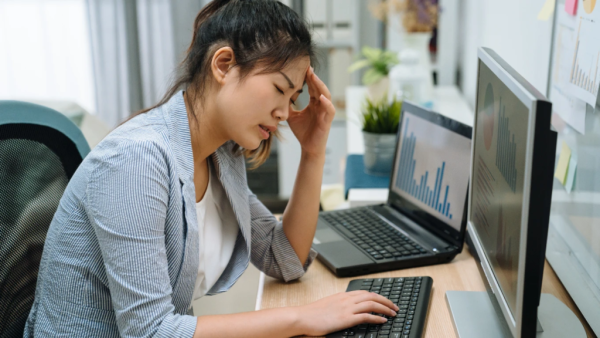
In the modern world, where technology is prevalent, people use screens not just as gadgets but as a significant part of their lives every day. They are used in the work and entertainment areas as well as in studying and communicating. These devices are with us 24/7 as smartphones, laptops, tablets, and TVs are considered part of our daily lives. Although the digital era offers many solutions, it is also a factor that plays with one of the most vulnerable human organs, the eyes.
Blue light explained
Blue light is a type of high-energy visible (HEV) light with a wavelength between the range of 380 to 500 nm. It occurs in sunlight and it plays a role in the sleep cycle of people. When a person is exposed to a screen for a long time, the eye muscles will have a hard time trying to fix the focus of the monitor there and will always be making small corrections to get rid of the problems of flicker, glare, and brightness fluctuation that are already present on the screen.
How blue rays affect the eyes
When we look at screens for long stretches of time, the eye muscles labor to keep the focus. This creates symptoms such as:
- Eye strain and headaches
- Blurred vision
- Dryness and burning
- Neck and shoulder tension
- Difficulty sleeping
Preventive measures
- Comply with the 20-20-20 rule: Pause for a 20-second break every time you work for 20 minutes and then look at something that is 20 feet away, so that the eye muscles can relax and fatigue can be reduced.
- Blinking: Blinking frequently helps. The use of digital devices can decrease the blink rate by 50% and cause the eyes' surfaces to dry up. If one blinks consciously, the moisture level in the eyes can be maintained.
- Control brightness and contrast: Adjust your screen brightness to the surrounding light to reduce glare.
- Blue light filters : Use blue light filtering glasses or screen-integrated filters to reduce exposure.
Establishing screen-time hygiene
People usually talk about mental health benefits from digital detox, but it's also good for eye health to follow screen hygiene practices. Setting limits on the use of digital devices, especially at night, is a means of reducing the impact of blue-light radiation, which leads to more pleasant vision and better quality sleep. Preventive eye care is just as important as protective habits; check-ups with an eye doctor can reveal in time the problem of digital eye strain or related complications. ~
It will take an extended period of time before our digital world disappears, but eye care preventive measures and consciousness can make its effects less intense. The management of blue light exposure has become one of the main pillars of the current health policies. The key is not to evade technology but to use it with a purpose and responsibly. By adopting a few everyday practices, we can protect our vision, have a better work experience, and ensure that our digital life does not come at the cost of poor eye health.
Dr. Sameer Bhati, Public Health Expert
-
These 3 daily mistakes are becoming the cause of death, heart doctor warned – ‘Smoking is suicide!’

-
Ahad Raza Mir and Sajal Aly’s casting clash led to majo

-
Remote Worker Quits In A Meeting Over Return To Office Mandate

-
What Each Zodiac Sign Needs To Know About October 13, 2025, According To Monday’s Tarot Horoscopes

-
What Happened To Cheap, High-RPM Engines That Scream On Highways?
